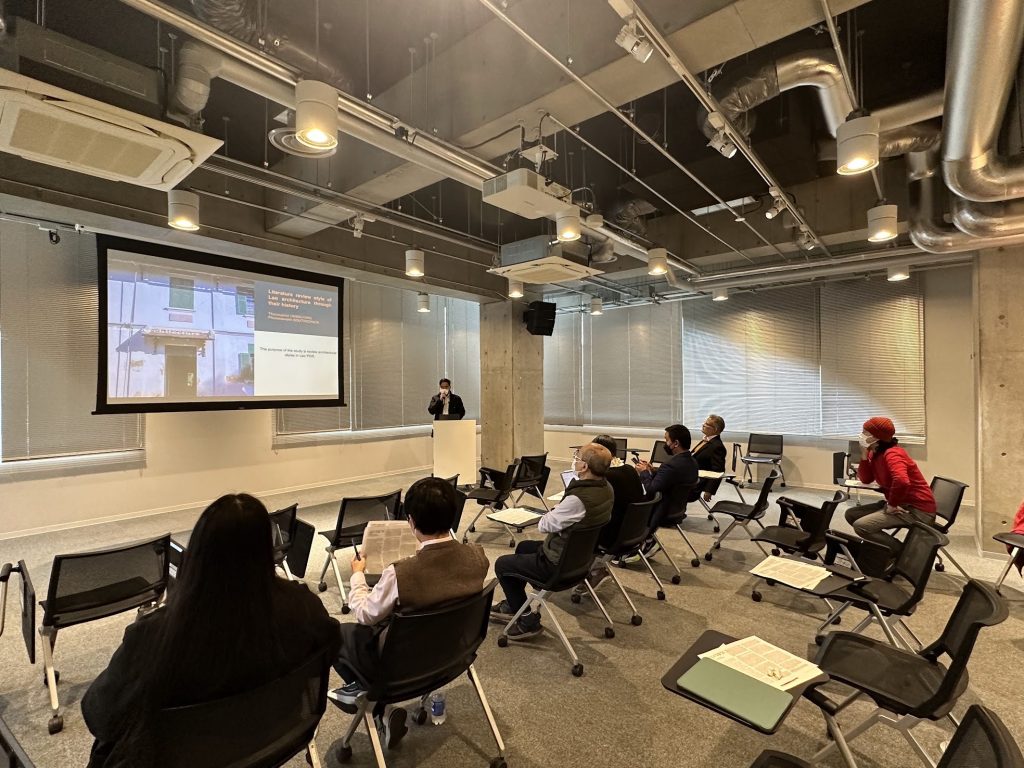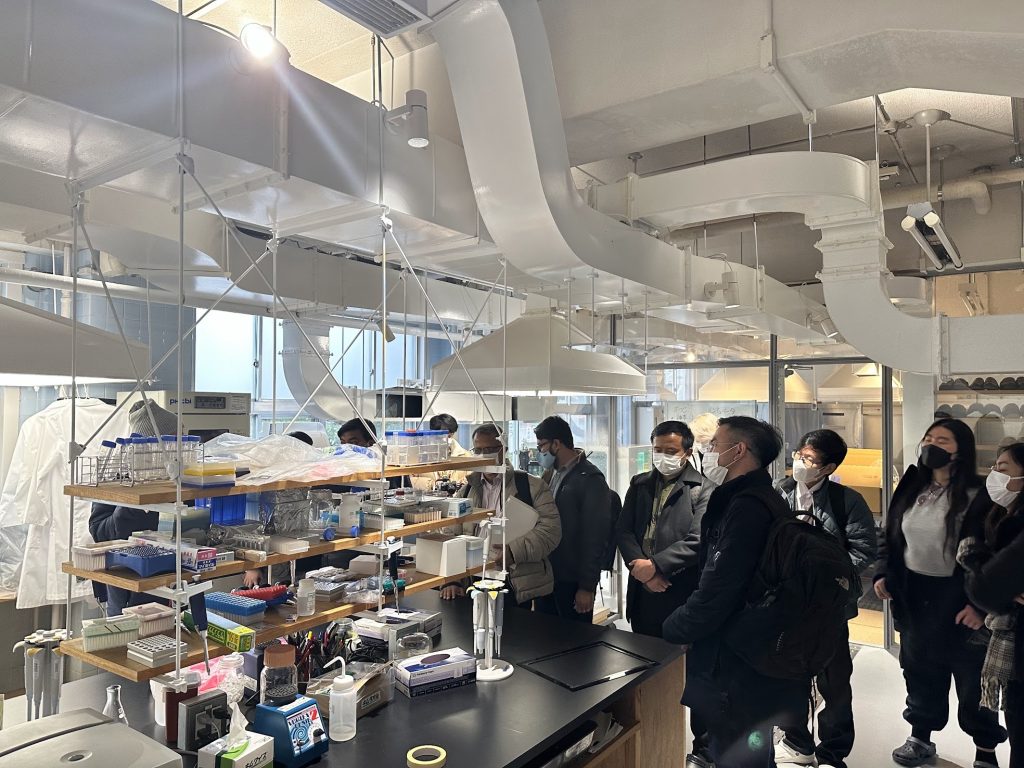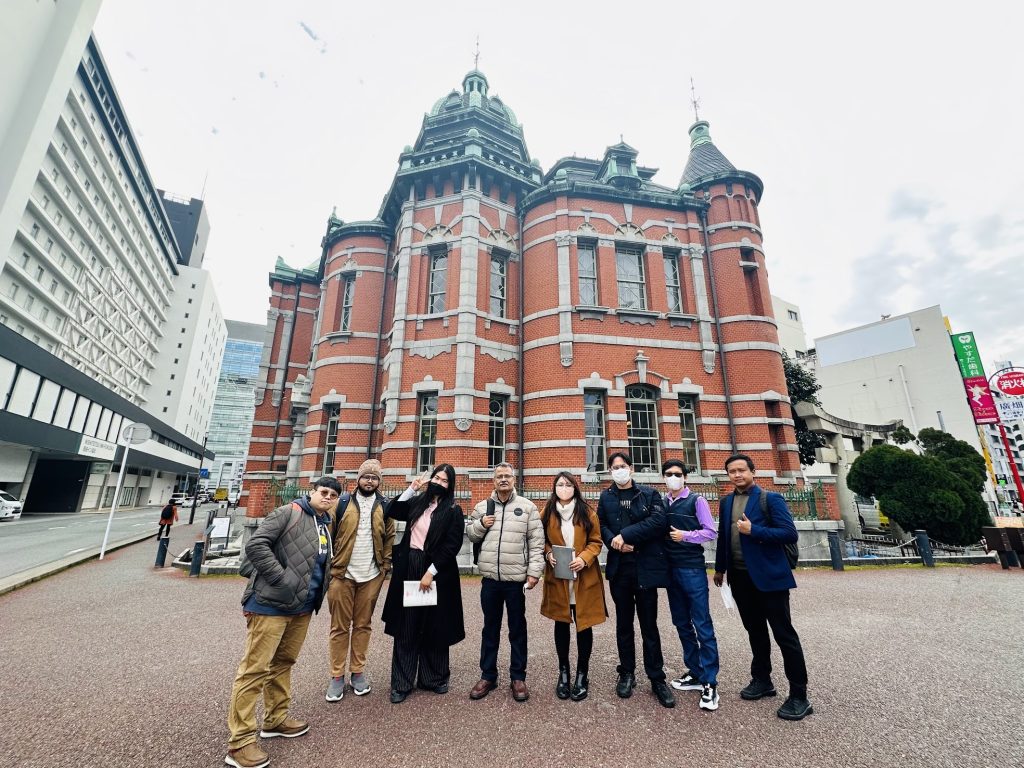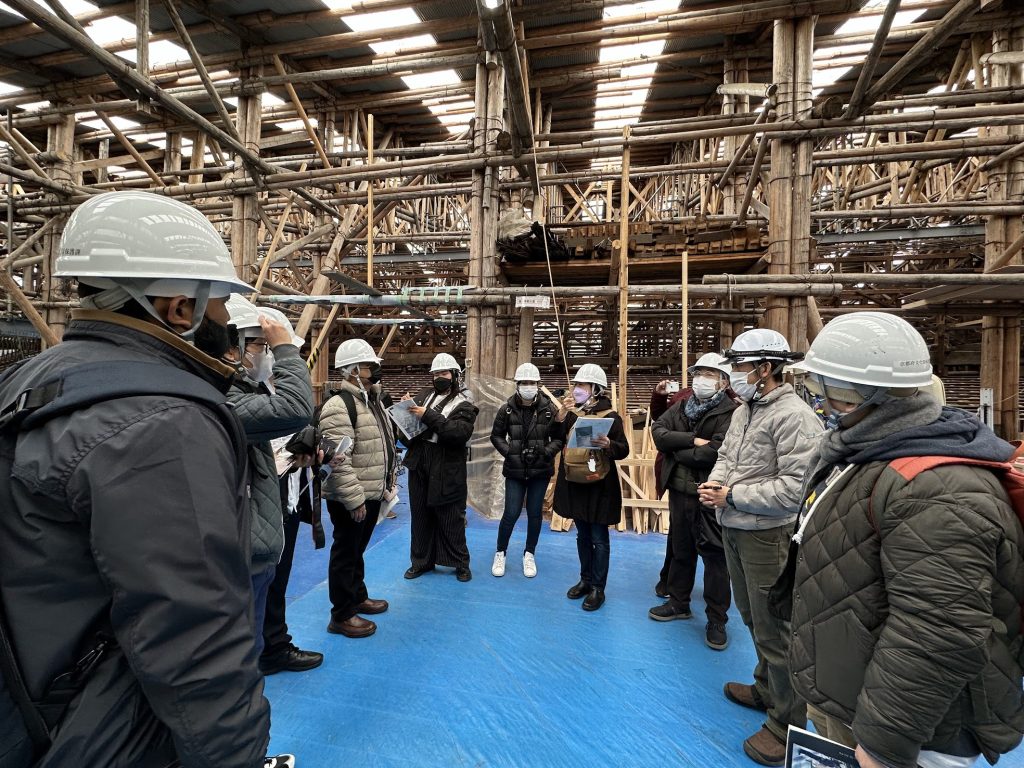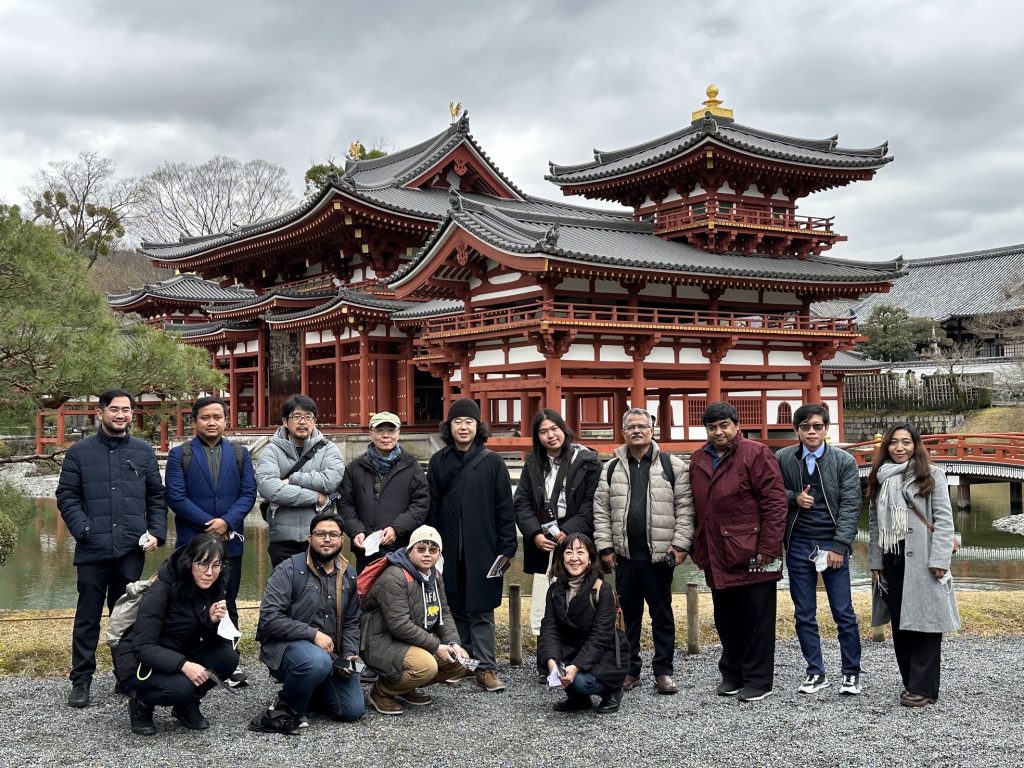
This year, the Environmental Design Global Hub (eghub) of the Faculty of Design at Kyushu University has organized the “Sakura Science Exchange Program.” The “Sakura Science Exchange Program” is one of the programs of the Japan Science and Technology Agency (JST), which has invited talented young foreign human resources for short-term visits to Japan, giving them the opportunity to experience both Japan’s cutting-edge science and technology and culture. The program’s theme was “Current State and Challenges of Urban Heritage in Asia.” We have invited 8 participants from 4 universities (Premier University, Institute of Technology of Cambodia, National University of Laos, and National Taipei University of Technology) from 4 countries (Bangladesh, Cambodia, Laos, and Taiwan). The program includes lectures, hands-on activities, symposiums, and architecture tours in Fukuoka City and other parts of Japan to learn about the preservation of architectural heritage and to view historical towns, famous architecture, and landscapes.
The program started on February 6 and ended on February 17. On the first day, the participants were introduced to each other and our campus. One of our graduate students brought the participants around campus to familiarize themselves and visit our faculty’s research facilities like the Acoustic Research Center, Experimental House for Living Design, and Research Center for Human Environmental Adaption. In the next three days, we had the Opening Symposium, where the representative of each country shared about the current state of urban heritage and challenges in their country. The participants attended a lecture by Associate Professor Tomo Inoue about the digital preservation of 3D space. They also got to experience technologies such as flying drones, using Polycam- LiDAR, and 3D scanners to digitalize existing architecture. The participants went on an architectural tour led by our students to ACROS Fukuoka, Fukuoka Red Brick Culture Museum, Kihinkan Hall, and the Bank of Fukuoka Head Office. They also attended an exhibition showcasing the archives of the works of a famous architect, Shoei Yoh, presented by graduate students from the Environmental Design Course.
From February 11 to 15, the participants went on Heritage Tour to Kyoto, Kobe, and Hiroshima. In Kyoto, they visited the Daitoku-ji temple restoration site. From this site, they have learned heritage restoration techniques, such as making a temporary roof to cover the whole structure, using natural materials, and using manual local construction methods without using heavy machines. Moreover, for the whole restoration process, approximately 1200 skillful carpenters and specialists are needed. At Byodo-in Phoenix Hall, one of the famous national treasures, the participants learned how national treasures are used for cultural heritage tourism and preserved in Japan. In Kobe, they visited Takenaka Carpenter’s Tools Museum to see the collection and conservation of ancient tools as Japanese cultural heritage. In Hiroshima, they went to the UNESCO world heritage site, Atomic Bomb Dome, and then took the World Heritage boat to Itsukushima Shrine. The participants learned not only heritage sites but also modern construction techniques through the Hiroshima Railway Construction site. From this tour, all participants learned about Japan’s current state of heritage restoration, which they can apply their knowledge to their country. They also got to experience and enjoy Japan through the tasty local foods and beautiful scenery.
Upon returning to Fukuoka, the participants presented and discussed what they had learned from this program. On the last day, they participated in the critique session of the graduating project from the students of the Environmental Design Course and voted on the best projects. Then, the program concluded with a farewell dinner where everyone had fun, and new friendships were established among Asian countries.
The program started on February 6 and ended on February 17. On the first day, the participants were introduced to each other and our campus. One of our graduate students brought the participants around campus to familiarize themselves and visit our faculty’s research facilities like the Acoustic Research Center, Experimental House for Living Design, and Research Center for Human Environmental Adaption. In the next three days, we had the Opening Symposium, where the representative of each country shared about the current state of urban heritage and challenges in their country. The participants attended a lecture by Associate Professor Tomo Inoue about the digital preservation of 3D space. They also got to experience technologies such as flying drones, using Polycam- LiDAR, and 3D scanners to digitalize existing architecture. The participants went on an architectural tour led by our students to ACROS Fukuoka, Fukuoka Red Brick Culture Museum, Kihinkan Hall, and the Bank of Fukuoka Head Office. They also attended an exhibition showcasing the archives of the works of a famous architect, Shoei Yoh, presented by graduate students from the Environmental Design Course.
From February 11 to 15, the participants went on Heritage Tour to Kyoto, Kobe, and Hiroshima. In Kyoto, they visited the Daitoku-ji temple restoration site. From this site, they have learned heritage restoration techniques, such as making a temporary roof to cover the whole structure, using natural materials, and using manual local construction methods without using heavy machines. Moreover, for the whole restoration process, approximately 1200 skillful carpenters and specialists are needed. At Byodo-in Phoenix Hall, one of the famous national treasures, the participants learned how national treasures are used for cultural heritage tourism and preserved in Japan. In Kobe, they visited Takenaka Carpenter’s Tools Museum to see the collection and conservation of ancient tools as Japanese cultural heritage. In Hiroshima, they went to the UNESCO world heritage site, Atomic Bomb Dome, and then took the World Heritage boat to Itsukushima Shrine. The participants learned not only heritage sites but also modern construction techniques through the Hiroshima Railway Construction site. From this tour, all participants learned about Japan’s current state of heritage restoration, which they can apply their knowledge to their country. They also got to experience and enjoy Japan through the tasty local foods and beautiful scenery.
Upon returning to Fukuoka, the participants presented and discussed what they had learned from this program. On the last day, they participated in the critique session of the graduating project from the students of the Environmental Design Course and voted on the best projects. Then, the program concluded with a farewell dinner where everyone had fun, and new friendships were established among Asian countries.
| Attach file |
|---|

